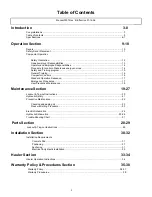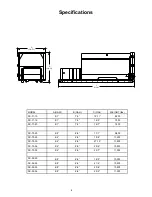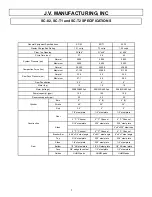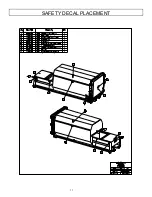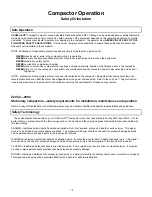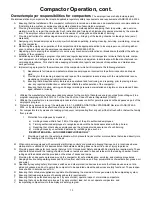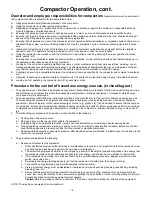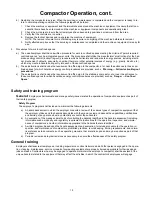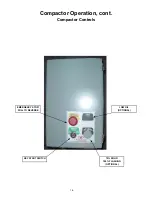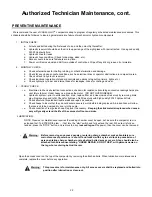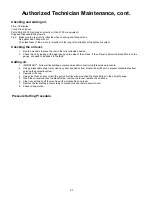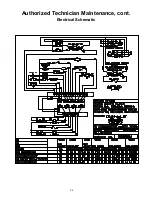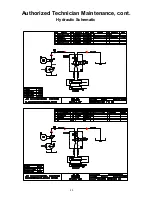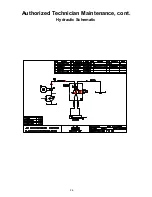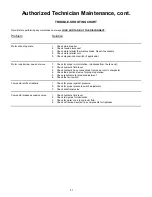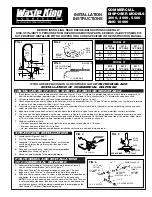
12
Compactor Operation
Safety Orientation
Safe Operation
CRAM-A-LOT
®
compactors meet or exceed all safety standards set by ANSI. Although we have included many safety features in
the design and construction of your compactor, safe operation of the equipment depends on the operator's adherence to certain
guidelines. To prevent accidents to personnel or damage to the compactor, the operator
must
NEVER VIOLATE ANY OF THE
FOLLOWING SAFETY PRECAUTIONS.
It is the owner / employer’s responsibility to ensure these guidelines are known and
followed by all operators of the compactor.
NOTE: Publication of these safety precautions does not imply or represent an inclusive list.
NEVER
place hands or arms in the compactor while it is operating.
NEVER
allow anyone except qualified electrical or hydraulic repair persons to work on the equipment.
NEVER
disable any safety switch.
NEVER
overload the compaction chamber.
NEVER
place concrete, heavy steel plate or castings, explosive materials, liquids, nor hazardous waste in the compactor .
NEVER
climb in or on the compactor, nor perform any maintenance/repairs unless the power is disconnected and locked /
Tagged
out.
NOTE: Hydraulic oil is the primary element of power transmission on the compactor. Remember that hydraulic systems can
remain pressurized even after the motor has stopped and or the power disconnected. Refer to the Lock Out / Tag Out instruc-
tions found elsewhere in this manual for instructions concerning the neutralization of these energy sources.
Z245.2—2004
Stationary compactors—safety requirements for installation, maintenance and operation.
Obtain a copy of this standard (ref: http//www.wastec.org) and become familiar with specific responsibilities and guidelines.
Safety Terminology
The accident prevention decals on your
CRAM-A-LOT
®
compactor meet or exceed standards set by ANSI and OSHA. It is im-
portant that you are familiar with the terminology used on the decals and the varying degrees of hazards that are associated with
this terminology.
DANGER—Indicates an imminently hazardous situation which, if not avoided, will result in death or serious injury. This signal
word is to be limited to the most extreme situations. The signal word Danger should not be used for property damage hazards
unless personal injury risk appropriate to the level is also involved.
WARNING—Indicates a potentially hazardous situation which, if not avoided, could result in death or serious injury. This signal
word should not be used for property damage hazards unless personal injury risk appropriate to this level is also involved.
CAUTION—Indicates a potentially hazardous situation which, if not avoided, may result in minor or moderate injury. It may also
be used to alert against unsafe practices that may also cause property damage.
NOTICE—Indicates a statement of company policy directly or indirectly related to the safety of personnel or protection of property.
This signal word should not be associated directly with a hazard or hazardous situation.
Summary of Contents for SCR-02
Page 2: ...2 ...
Page 4: ...4 ...
Page 8: ...8 ...
Page 9: ...9 Operation Section ...
Page 10: ...10 SAFETY DECALS ...
Page 11: ...11 SAFETY DECAL PLACEMENT ...
Page 19: ...19 Authorized Technician Maintenance Section ...
Page 24: ...24 Authorized Technician Maintenance cont Electrical Schematic ...
Page 25: ...25 Authorized Technician Maintenance cont Hydraulic Schematic ...
Page 26: ...26 Authorized Technician Maintenance cont Hydraulic Schematic ...
Page 28: ...28 Parts Section ...
Page 29: ...29 SAFETY DECAL PLACEMENT ...
Page 30: ...30 Installation Section ...
Page 33: ...33 Hauler Section ...





